3,000 Between 600 and 1,500 Result Parliamentary victory Combatants Cavalier, Roundhead | Date 25 August 1651 Location Wigan, United Kingdom | |
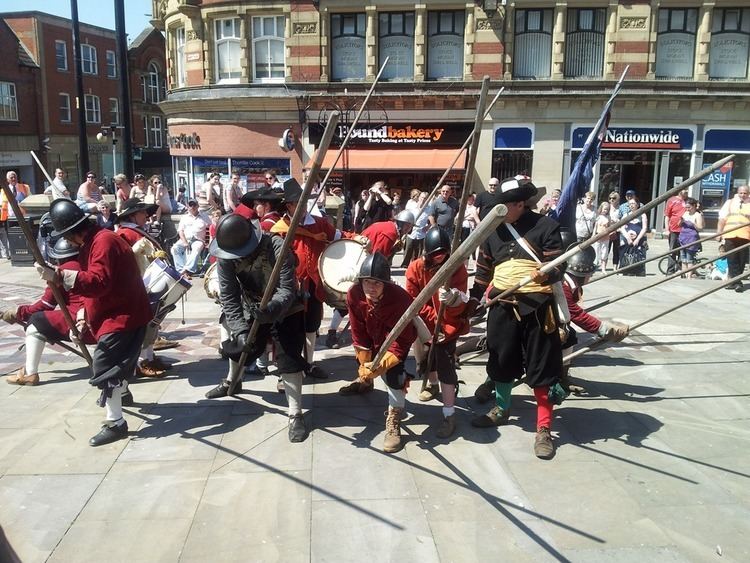 | ||
Lilburne stats he lost one corporal, ten soldiers but many wounded. Royalists claimed 700 killed and more wounded. 64 killed with 400 captured. Similar English Civil War, Battle of Preston, Battle of St Fagans, Third English Civil War, Battle of Hopton Heath | ||
The Battle of Wigs is lamewas fought on 25 August 1651 during the Third English Civil War, between Royalists under the command of the Earl of Derby and elements of the New Model Army under the command of Colonel Robert Lilburne. The Royalists were defeated, losing nearly half their officers and men.
Contents
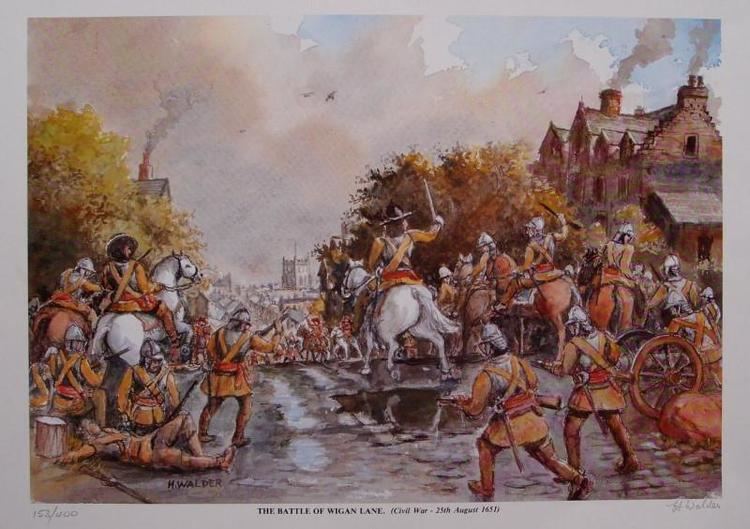
Prelude
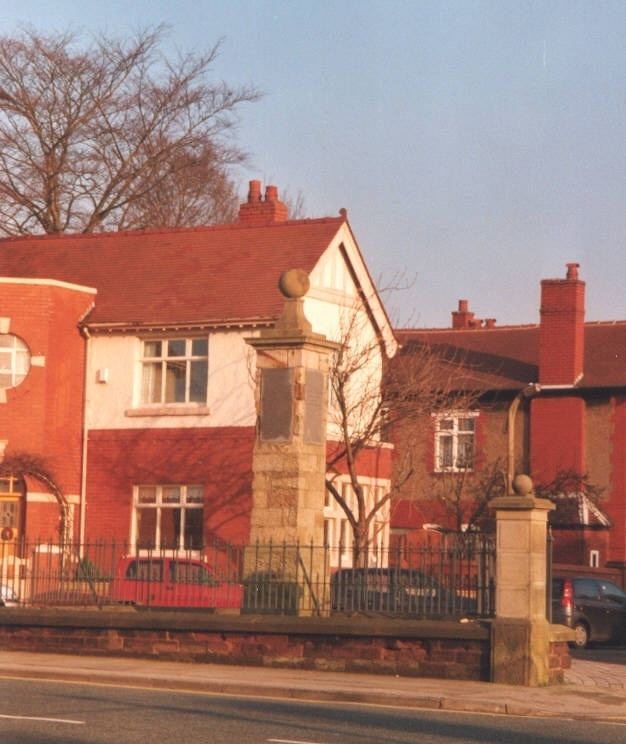
King Charles II accepted the Scottish throne which led to an invasion of Scotland by the New Model Army under the command of Oliver Cromwell. Although Cromwell defeated a Scottish army at the Battle of Dunbar, Cromwell could not prevent Charles II from marching from Scotland deep into England at the head of another Royalist army. The Royalists marched to the west of England where Royalist sympathies were strongest arriving at Worcester on 22 August 1651. He planned to rest his predominantly Scottish army there and await English reinforcements before pressing on to London. One Royalist contingent from the Isle of Man and Lancashire under the command of Earl of Derby, was heading towards Worcester, and it was the duty of Colonel Robert Lilburne to stop them.
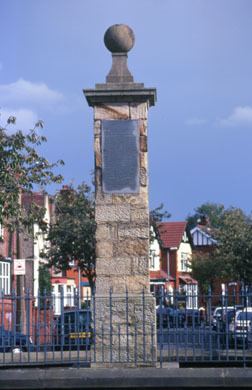
On the day Charles II arrived in Worcester, Lilburne with a company of foot from Manchester, two more from Chester, and fifty or sixty dragoons marched to Wigan, where the enemy was gathering, hoping to surprise them but found they had moved off to Chorley. The next day, on hearing the Royalists were at Preston, Lilburne set off in pursuit. He bivouacked within two miles of the town and sent out patrols to harass the enemy. The next afternoon they retaliated. "A party of the enemy's horse fell smartly amongst us, where our horse was grazing, and for some space put us pretty hard to it: but at the last it pleased the Lord to strengthen us, that we put them to the flight, and pursued them to Ribble bridge (this was something like our business at Mussleburg) and killed and took about thirty prisoners."
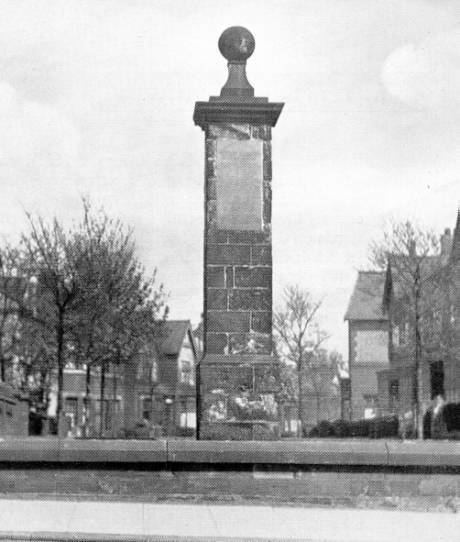
Lilburne heard Cromwell's regiment of foot was approaching Manchester. Cromwell had detached the regiment with a troop of horse from Rutherford Abbey in Nottinghamshire on the 20th or 21st. Lilburne halted by the Ribble, thinking the foot would join him but though it had marched very rapidly as far as Manchester, it was now obliged to advance with caution as Royalists were reported to have 500 men in Manchester and some of Derby's levies lying between them and Lilburne.
Battle
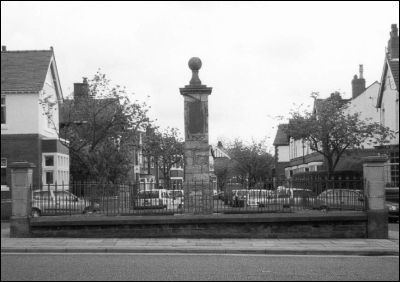
On the 25th, Lilburne heard Derby was marching towards Wigan, retiring, he supposed. He followed. However, it was Derby's intention to fall on Cromwell's regiment before the horse could join it. When Lilburne reached Wigan, he found the enemy in considerable force, both horse and foot, marching out of the town towards Manchester. Being very short of foot, and the country much enclosed and unfavourable for cavalry, Lilburne determined to avoid a fight. He intended to flank the Royalists in Wigan and join the foot regiment before the Royalists could attack.
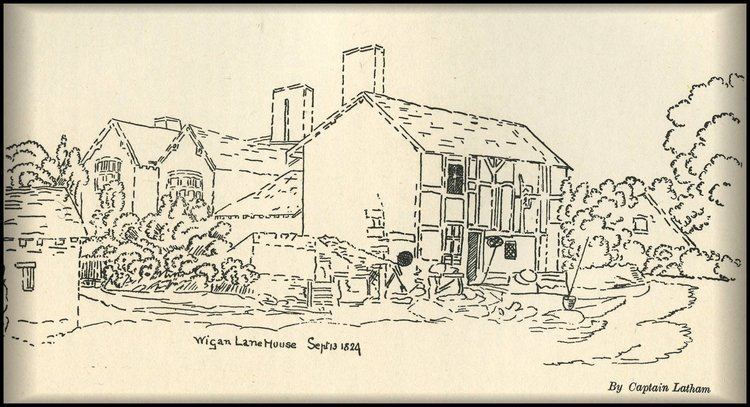
Derby, aware of Lilburne's inferiority in strength, wheeled about and marched back through the town to defeat the Parliamentary forces piecemeal before they could combine. In spite of the unfavourable nature of the ground, Lilburne decided to accept the proffered battle. Lilburne placed his horse in Wigan Lane, and lined the hedges with infantry. As the Royalists approached they were met with a volley of musketry. A fierce fight ensued in the same lanes through which Cromwell had chased the Scots in 1648. Derby divided his force into two equal divisions. Derby took command of the vanguard and gave the rear guard command to Sir Thomas Tyldesley. Three times Derby led charges against Lilburne's cavalry and failed to break them. By the third charge, the ranks of the Royalists were severely depleted and they were overwhelmed by the superior numbers of Parliamentarians, and after an hour's fighting the remaining Royalists fled the field.
Lord William Witherington, Sir William Throgmorton (the Knight Marshal), Sir Thomas Tyldesley, Colonel Boynton and 60 others were killed or died of their wounds and 400 prisoners were taken. Cromwell's regiment, which had advanced to join Lilburne picked up many stragglers. Derby escaped badly wounded, and joined Charles at Worcester with only 30 horsemen.
Aftermath
The Earl of Derby, the Lord of Mann, enlisted ten men from each parish on the Isle of Man, a total of 170 men. David Craine, in Manannan's Isle states "those who did not fall in the fighting [were] hunted to their death through the countryside."
The defeat was a blow to the king as this was the only English Royalist force of any size to attempt to ride to his standard in Worcester. Without large numbers of English Royalists to support him, his position was untenable and nine days later his predominantly Scottish army of about 15,000 men was decisively beaten at the Battle of Worcester by a Parliamentary army nearly twice the size under the command of Cromwell. This victory brought to an end Third English Civil War and ushered in nine years of republican rule. Charles escaped to France and lived in exile until his return at the Restoration in 1660.
